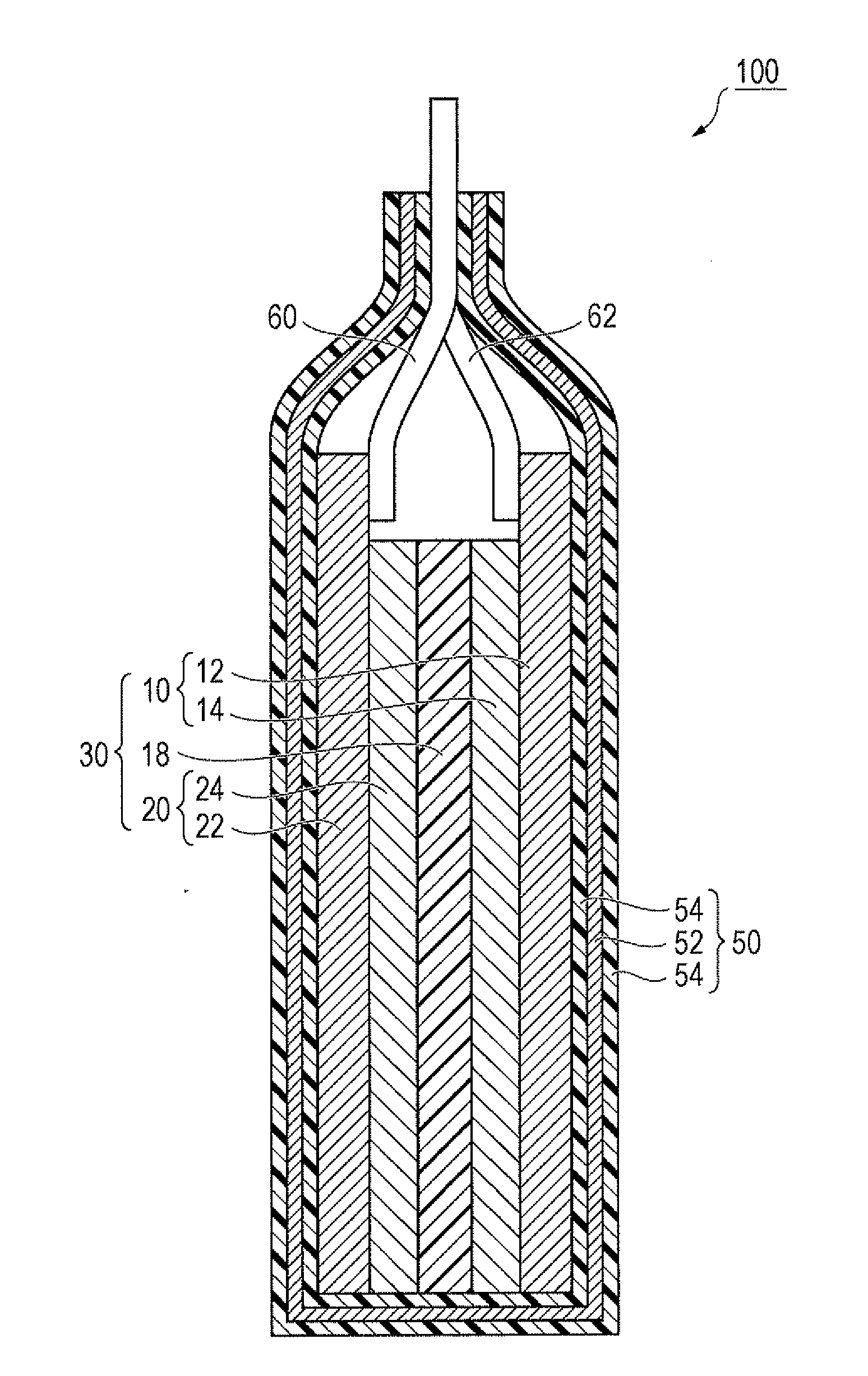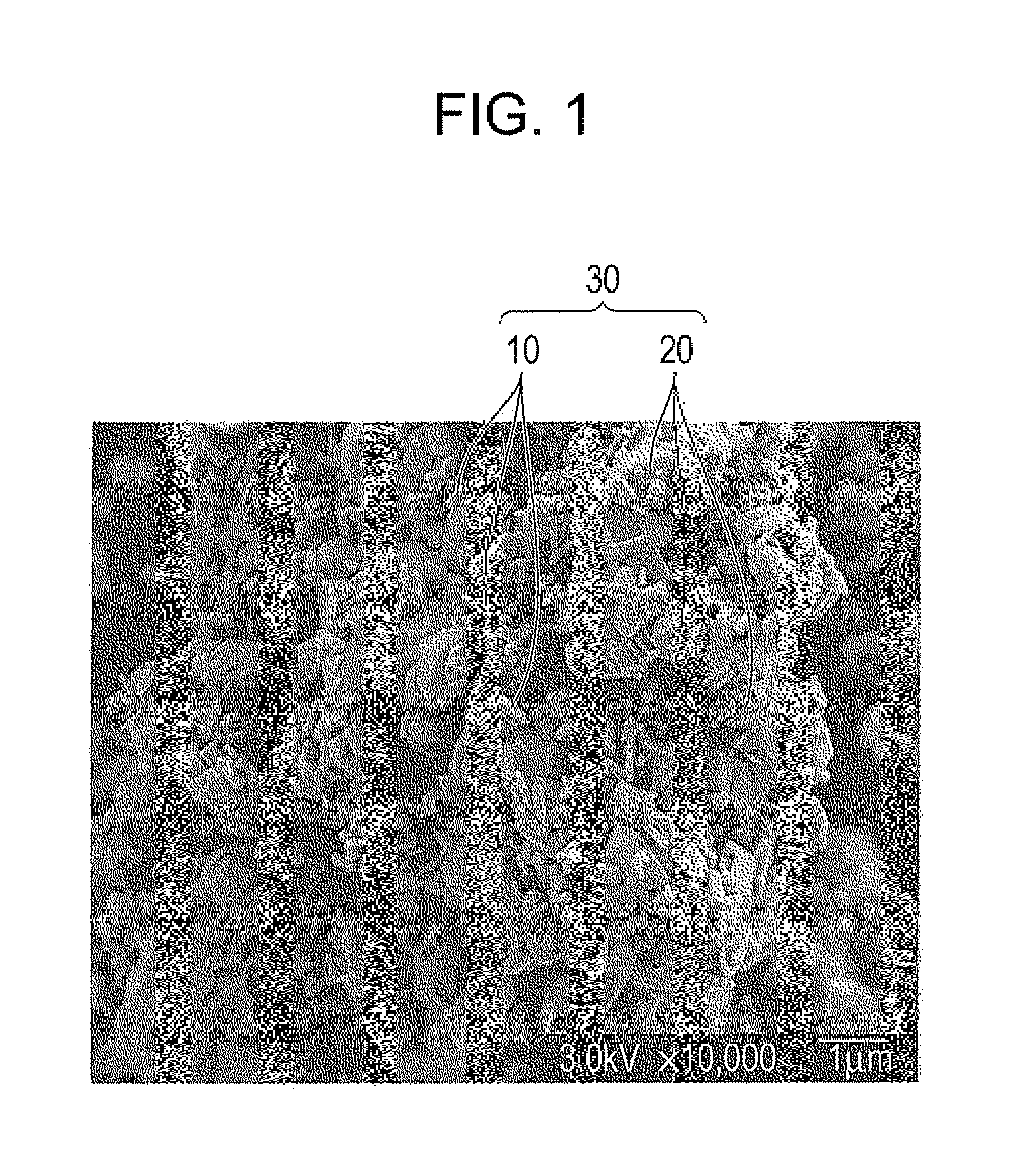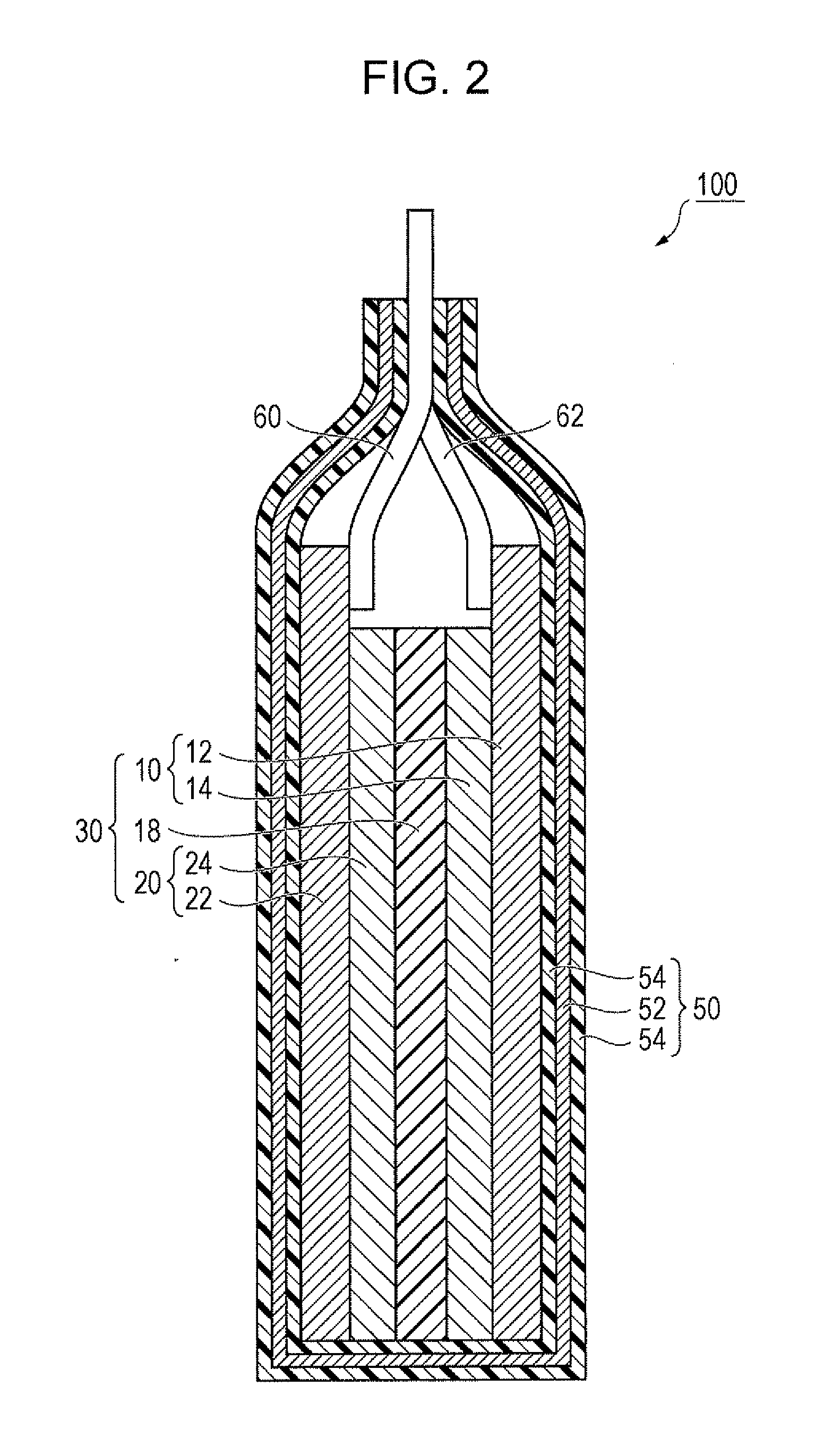Active material, electrode containing the active material, lithium secondary battery including the electrode, and method for making active material
- Summary
- Abstract
- Description
- Claims
- Application Information
AI Technical Summary
Benefits of technology
Problems solved by technology
Method used
Image
Examples
example 1
[0088]Into a 500 mL glass inner cylinder of an autoclave, 18.38 g (0.10 mol) of V2O5 (produced by Nacalai Tesque, 99% purity), 200 g of distilled water (produced by Nacalai. Tesque, for HPLC), and 23.06 g (0.20 mol) of H3PO4 (produced by Nacalai. Tesque, 85% purity) were added in this order and stirred with a magnetic stirrer. Then 2.55 g (0.05 mol) of hydrazine monohydrate was added as a reductant. The pH was 3. The glass inner cylinder was hermetically sealed and was retained at 95° C. for 16 hours in the autoclave under stirring. The content was cooled to room temperature and the glass inner cylinder was opened. A light blue paste with no flowability was obtained. The pH of the liquid was 3.
[0089]To the resulting paste-like substance, 8.48 g (0.20 mol) of LiOH·H2O (produced by Nacalai Tesque, 99% purity) was added. LiOH·H2O remained on the paste and no changes in color hue were observed. The pH immediately after addition was 11.
[0090]The glass inner cyl...
examples 7 and 8
[0094]The same process was conducted as in Example 1 except that the heating rates used from 25° C. to 110° C. were changed to 3 and 10° C. / min.
examples 9 and 10
[0095]The same process was conducted as in Example 1 except that the amounts of hydrazine charged were 15 / 25 fold and 35 / 25 fold that used in Example 1, and the reductant concentrations used were changed to 0.15 mol / L and 0.35 mol / L.
PUM
 Login to View More
Login to View More Abstract
Description
Claims
Application Information
 Login to View More
Login to View More - R&D
- Intellectual Property
- Life Sciences
- Materials
- Tech Scout
- Unparalleled Data Quality
- Higher Quality Content
- 60% Fewer Hallucinations
Browse by: Latest US Patents, China's latest patents, Technical Efficacy Thesaurus, Application Domain, Technology Topic, Popular Technical Reports.
© 2025 PatSnap. All rights reserved.Legal|Privacy policy|Modern Slavery Act Transparency Statement|Sitemap|About US| Contact US: help@patsnap.com



